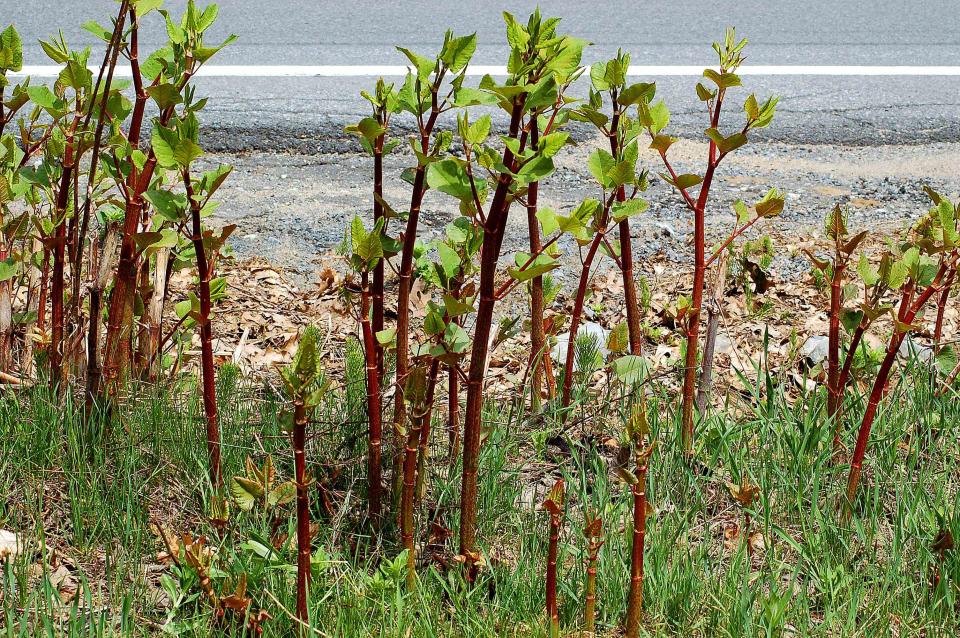Which Plants Are Considered Weeds? Here's a Complete Guide
Weed Identification, Control, Characteristics, and Invasive Species

Reviewed by Kathleen Miller
What are weeds? Rather than a botanical classification, "weeds" are a subjective term. However, there are a few points about weeds that most gardeners would agree on.
Weeds typically include plants that are growing in an undesired location, but not all weeds are harmful or invasive. Many homeowners, gardeners, and landscapers alike aim to remove weeds that are competing with or overgrowing other plants, and there are several common methods to do so.
Learn about the identification of weeds and their common characteristics, plus how to control them in your garden.
A weed is a plant that possesses undesirable traits and is invasive to our lawns and gardens. Weeds spread out of control, often to areas where you don't want them, and may harm garden plants by depriving them of water, nutrients, or sunlight.
Identification and Characteristics of Weeds
A weed, by popular definition, is a plant growing in the wrong place—but this isn't always the case. For example, if you have a vegetable bed adjacent to your lilac bushes (Syringa vulgaris), some of the suckers from the latter may pop up next to your vegetables, causing you the extra work of removing the suckers, but those are not weeds. Be mindful in identifying which plants are invasive weeds and which were reseeded.
Some examples of common weeds include:
Crabgrass (Digitaria spp.): Creeping annual with multiple stems that plague lawns and exploit cracks in hardscape
Japanese knotweed (Polygonum cuspidatum): Tall (up to 9 feet), bamboo-like, herbaceous perennial with fleecy fall flowers that spreads vigorously by rhizomes
Stinging nettle (Urtica dioica): Herbaceous perennial (commonly 3 feet tall, occasionally up to 7 feet) with pointed, serrated leaves that are covered in fine hairs, contact with which causes rashes
Weed Removal Methods
There are weed removal methods to suit a variety of tastes. Some are organic, others use chemicals. Some are high-maintenance/fussy but highly effective/safe for your garden, while others cause you less work and are no-fuss but also less effective or involve more risk, like boiling water and pouring it over the weeks, using salt/saltwater, chemical herbicides, or hand-pulling.
Using Boiling Water
Pouring boiling water on a weed (let it seep right down into the roots) is one of the easiest removal methods. There's no mixing involved, and you can do it at any time: day or night, with or without sunshine, even when it's raining. It's relatively fuss-free; just don't allow it to splash onto your good plants. But it won't kill the toughest weeds.
Using Salt
Using Chemical Herbicides
Mix table salt (sodium chloride) into water and pour it onto weeds. Creating such a solution makes it easier for the weeds to absorb it (as opposed to just sprinkling salt on them). This method is highly effective in killing weeds. But it's riskier to use than boiling water. Not only will it kill good plants as well as bad ones, but, if too much of it is allowed to leech into the soil, that patch of ground will become sterile over time.
Using chemical herbicides to kill weeds is a complex topic, due to the great diversity of the herbicides available. There are herbicides meant for use on lawns and others for brushy areas. There are preemergent and post-emergent types. Some herbicides will kill only specific types of plants, while others will kill just about anything. Chemical herbicides are generally effective when used by well-informed gardeners. But they are also the riskiest (because they can put your own health at risk) and fussiest weed removal method. When you can use them is restricted by conditions, particularly with foliar sprays; for example:
Don't spray on windy days (the herbicide could land on your good plants).
Don't spray when it's going to rain (the rain will wash the product off too soon).
Removing by Hand-Pulling
Hand-pulling weeds is the least risky and least fussy of the methods. But it is the most high-maintenance. Moreover, it's also ineffective if you fail to remove the plant by the roots (which, with some weeds, is more difficult than you might think).
Invasive Plants and Control
An invasive plant is a non-native species that has shown a tendency to spread aggressively and harm native plant populations by choking them out. Some invasive species are weeds, but others are considered landscape plants that have redeeming qualities. Native plants are those that have been growing in the region in question for a considerable amount of time. For the Americas, many consider the plants growing there before Columbus arrived to be the region's native plants.
Homeowners concerned with the effects that invasive plants have on native plants often tailor their gardens accordingly. For example, they might forgo well-manicured lawns and allow native wild violets (Viola sororia) to grow in them rather than remove them as weeds. You could also grow native common milkweed (Asclepias syriaca) as a way to support butterfly populations, despite their "weedy" appearance. Avoid planting burning bush (Euonymus alatus), a fall standout that's invasive but one of the most popular landscape plants in North America.
Invasive plants commonly spread through seeds and rhizomes. You can contain the spread of an invasive plant that spreads via seeds by deadheading it. This is a particularly helpful practice if the plant in question has an attractive flower: You get to enjoy the bloom while still avoiding unwanted spread.
You can contain the spread of an invasive plant that spreads via rhizomes or underground shoots, such as running bamboo, by erecting a bamboo barrier, a sturdy plastic shield that you bury into the soil. In the case of bamboo, the barrier should extend 30 inches down into the soil and protrude 2 inches above the soil.
Read Next:Spring Control of Lawn Weeds

